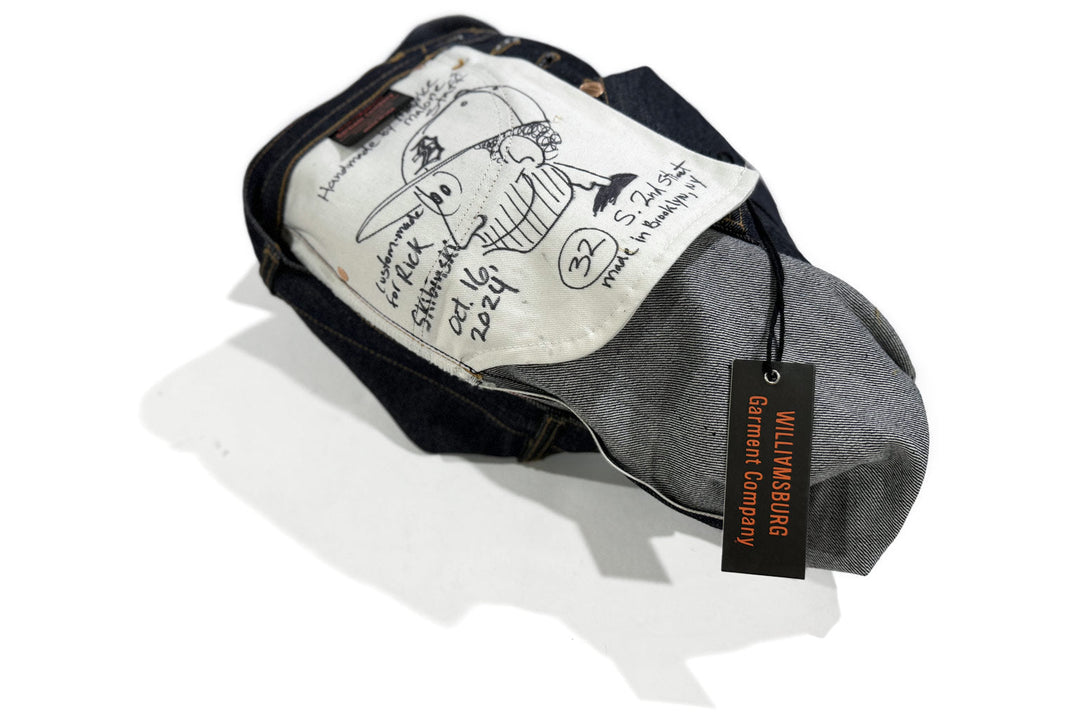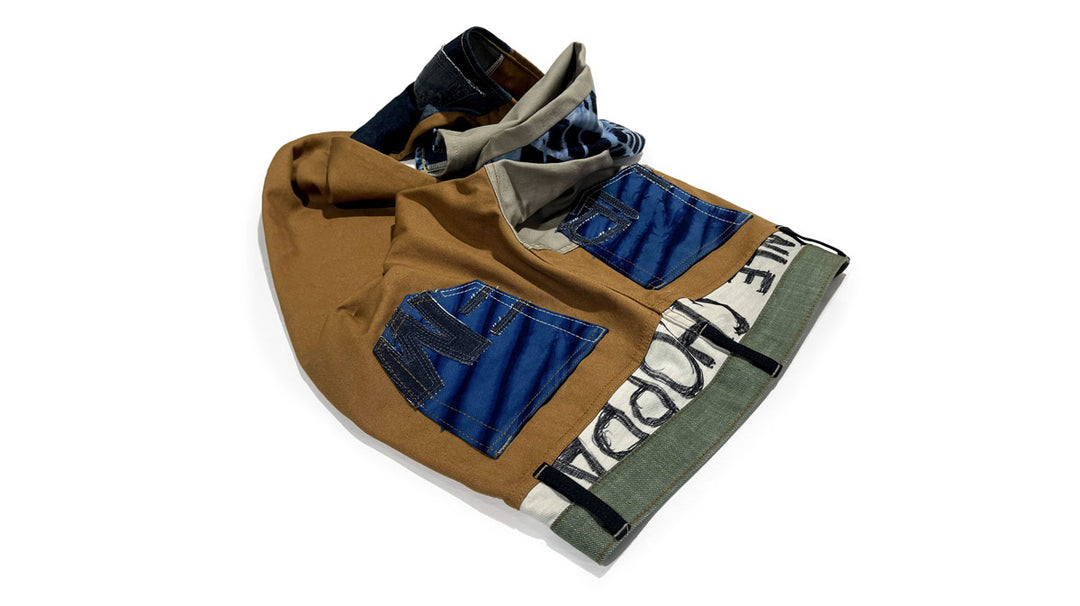NLE Choppa Jeans Artfully Handmade from Denim Scraps

Crafting a custom pair of jeans for NLE Choppa was an inspired decision, stemming from my gratitude for him wearing our Chain-Link overalls with such flair. Seeing him elevate our design with his unique style, I felt a gesture of thanks was in order. Miquelle West, NLE Choppa's stylist, shared some invaluable insights into his fashion preferences, highlighting his fondness for loose-fitting attire. Armed with this knowledge, I chose our men’s basic straight fit as the foundation for these custom jeans, ensuring they'd align perfectly with his fashion sense.
Now, the art of handcrafting jeans, especially a design as distinctive as this one, feels less like a task and more like an artistic endeavor. There's a genuine joy in diving into our container of scrap fabrics, with each piece possessing the potential to be the next highlight of the design. It's all about intuition and creativity. If a scrap grabs my attention due to its contrasting texture or an appealing pattern, it becomes part of the creation. The same principle applies to the threads. There's no set formula. If a machine is threaded with a color that promises to add a unique element or complements the fabric beautifully, I embrace it. Every stitch and every choice of fabric ensure that each garment is its own unique creation in the vast world of denim. It's more than just producing a pair of jeans; it's about weaving a story, one stitch at a time.

In crafting this pair, I felt a strong inclination to incorporate fabric from our recently wrapped-up Shibori collections. Though we were short on material to create a full pair of jeans, we had a good stash of sizeable panels. These panels, ideal for some innovative mixing and blending, allowed me to create a distinct design. Thus, I chose the eye-catching Shibori Sazanami bleached pattern for the front left leg. But merely using it for half a leg felt too run-of-the-mill. Keen to elevate the design and relishing a good challenge, I extended the pattern across the fly, ensuring the shibori matched seamlessly at the seams. For the front right side, I decided against a conventional straight run from the panel to the crotch. Instead, I cut the fabric at a subtle angle, creating a unique design from below the fly, curving through the front rise, and leading down to the crotch.
Next, I rummaged through our denim repair scraps box and found two pairs of old Levi’s jeans graciously donated by a customer for repurposing. From the first Levi's pair, I zeroed in on a leg section showcasing thigh abrasion and whiskering. Now, rather than the conventional placement on the hips, I envisioned those whiskers emanating from the crotch. It's a subtle shift, but it can create a dynamic change in the jean's narrative.
Transitioning to the lighter-washed pair, I snipped a portion around the back pocket. Flexing a bit of creative muscle, I imagined the back pocket, traditionally a staple of structure, flipped and flaring out upside down near the leg's hem. Yes, it's unconventional, but fashion is about pushing boundaries.
On one side, the jeans maintained their classic demeanor but boasted a captivating shibori bleached design. As for the other leg, it became a mosaic of contrasting fabrics. The right leg's front hand pocket back panel incorporated a tan canvas, which also made a cameo on the rear. And to top it off, a white denim coin pocket, previously part of another pair's hem that came in for alterations, was strategically placed over the canvas. This amalgamation isn't just about aesthetics; it's about the evolution of denim storytelling.

Check back. To be continued.








Leave a comment